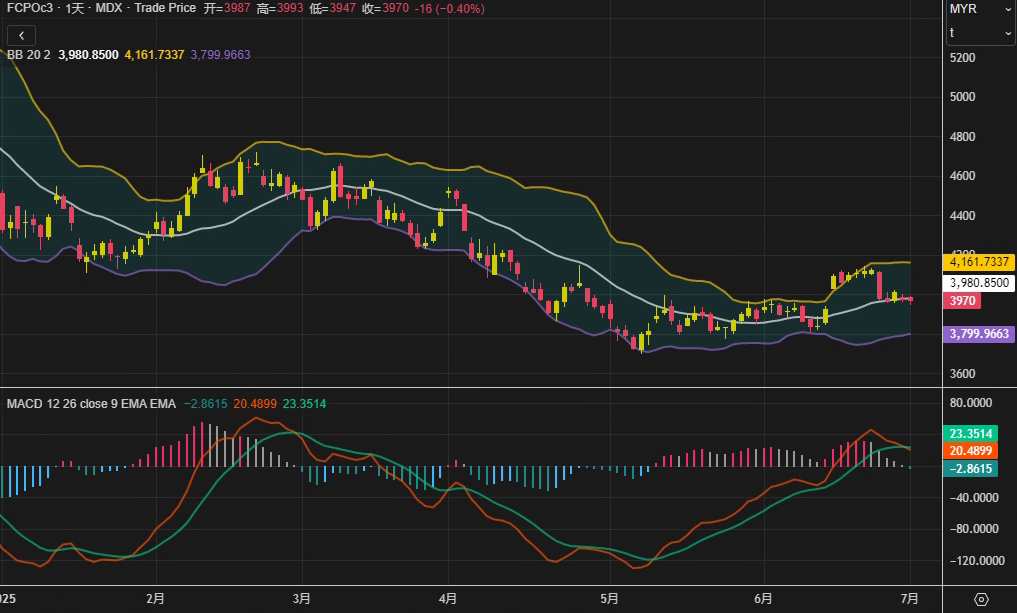Palm oil fell for two consecutive days! The key level of 3970 ringgit was broken. Has the bears gained the upper hand?
2025-07-01 19:14:00

Cross-market linkage pressure emerges
Darren Lim, commodity strategist at Singapore brokerage Phillip Nova, pointed out: "The current market sentiment is cautious, and macro uncertainty and the weak performance of related oil varieties have made it difficult for palm oil to gain independent upward momentum." Specifically, the main soybean oil contract (DBYcv1) of the Dalian Commodity Exchange fell slightly by 0.03%, and the soybean oil (BOcv1) of the Chicago Board of Trade (CBOT) also fell by 0.02%. Although the Dalian palm oil contract (DCPcv1) rebounded slightly by 0.29%, the narrowing of the international soybean-palm oil price gap still limited the space for palm oil's replacement demand.
The volatility of the crude oil market also indirectly dragged down palm oil. Although the expectation that OPEC+ may increase production in August has been partially digested, the international oil price has been sideways during the day, weakening the attractiveness of palm oil as a biodiesel raw material. In addition, the ringgit exchange rate against the US dollar appreciated by 0.33% today, further raising the purchase cost of buyers denominated in US dollars.
Indonesia's export surge and price policy adjustment
The latest data from Statistics Indonesia shows that the country's exports of crude palm oil and refined products surged 53% year-on-year in May, mainly due to price advantages that stimulated demand from major importing countries. It is worth noting that the Indonesian Ministry of Trade has raised the reference price of crude palm oil (CPO) in July to US$877.89 per ton, up 2.5% from US$856.38 per ton in June. This policy adjustment may support Indonesia's export quotations in the short term, but it may also intensify export competition with Malaysia.
In Malaysia, data from independent inspection agencies AmSpec Agri and Intertek both showed that palm oil product exports in June increased by 4.3%-4.7% month-on-month, but this increase failed to offset market concerns about inventory pressure. Darren Lim of Phillip Nova added: "The sustainability of the export recovery remains to be seen, especially against the backdrop of increased supply from Indonesia."
Outlook for the future: Focus on demand-side variables
The current palm oil market is in a situation where long and short factors are intertwined. Technical indicators show that there is still adjustment pressure in the short term, but the lower track of the Bollinger Band (around 3799 ringgit) may provide support. Institutional views generally believe that if crude oil prices stabilize and rebound or there are structural supply problems in the soybean oil market, palm oil may regain upward momentum.
There are two key points to focus on in the coming week: first, the actual impact of OPEC+ production decisions on the crude oil market, and second, whether the high-frequency export data of major producing countries in Southeast Asia in early July can continue the growth trend. For traders, in the absence of unilateral drivers, cross-product spreads and inter-regional arbitrage opportunities may become more concerned strategic directions.

- Risk Warning and Disclaimer
- The market involves risk, and trading may not be suitable for all investors. This article is for reference only and does not constitute personal investment advice, nor does it take into account certain users’ specific investment objectives, financial situation, or other needs. Any investment decisions made based on this information are at your own risk.










